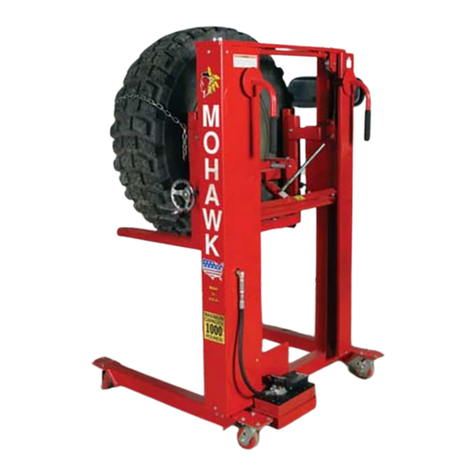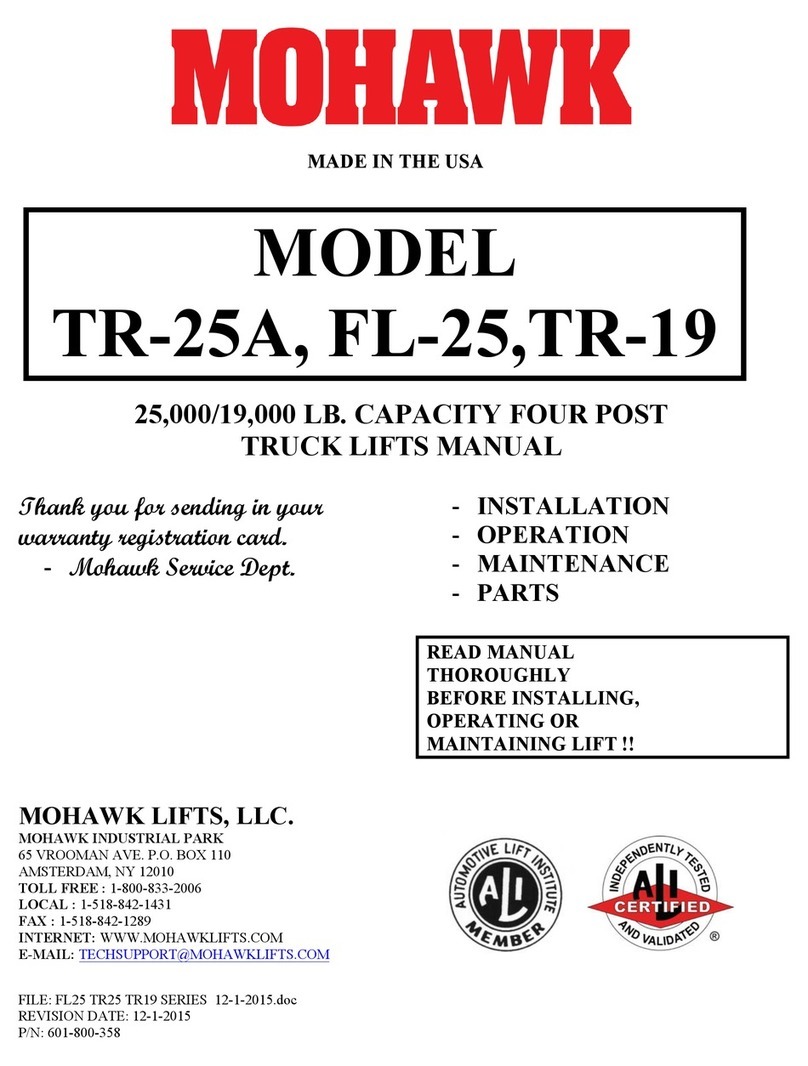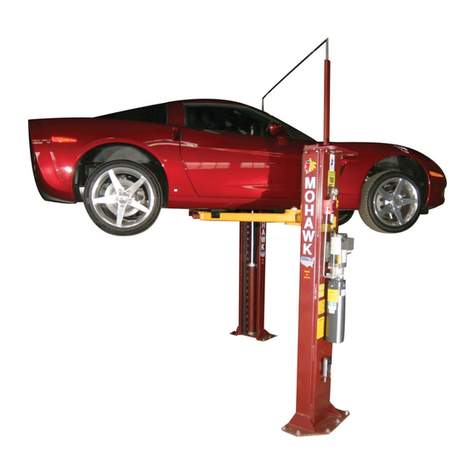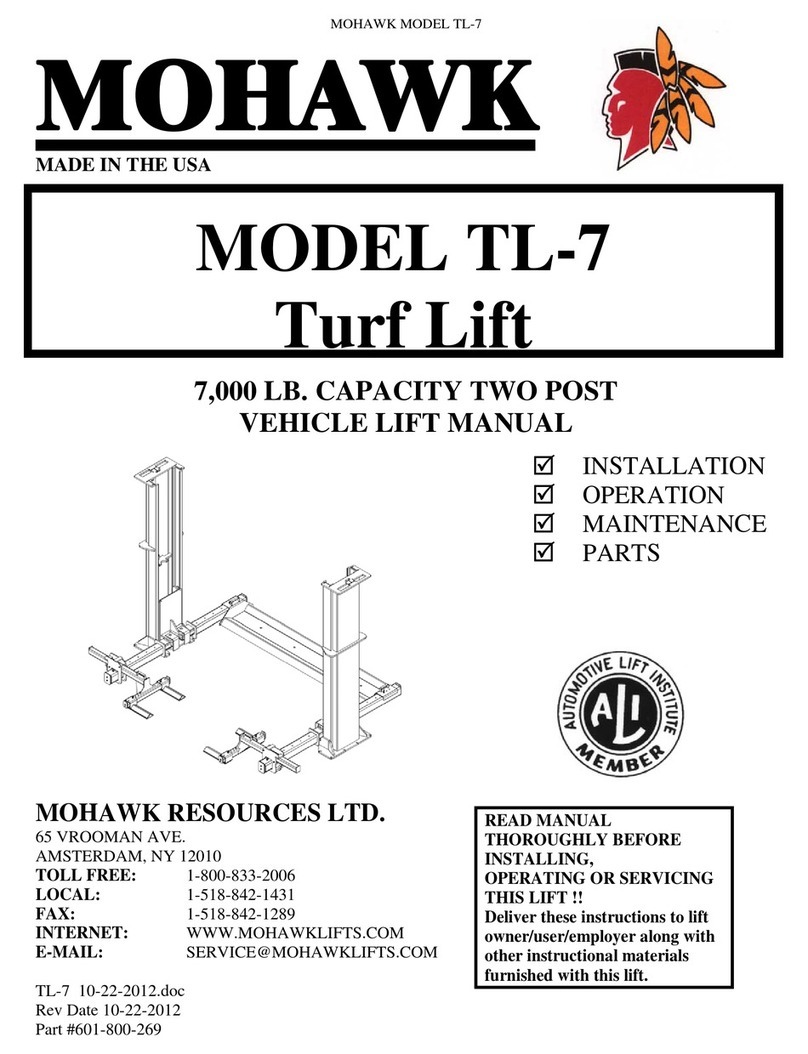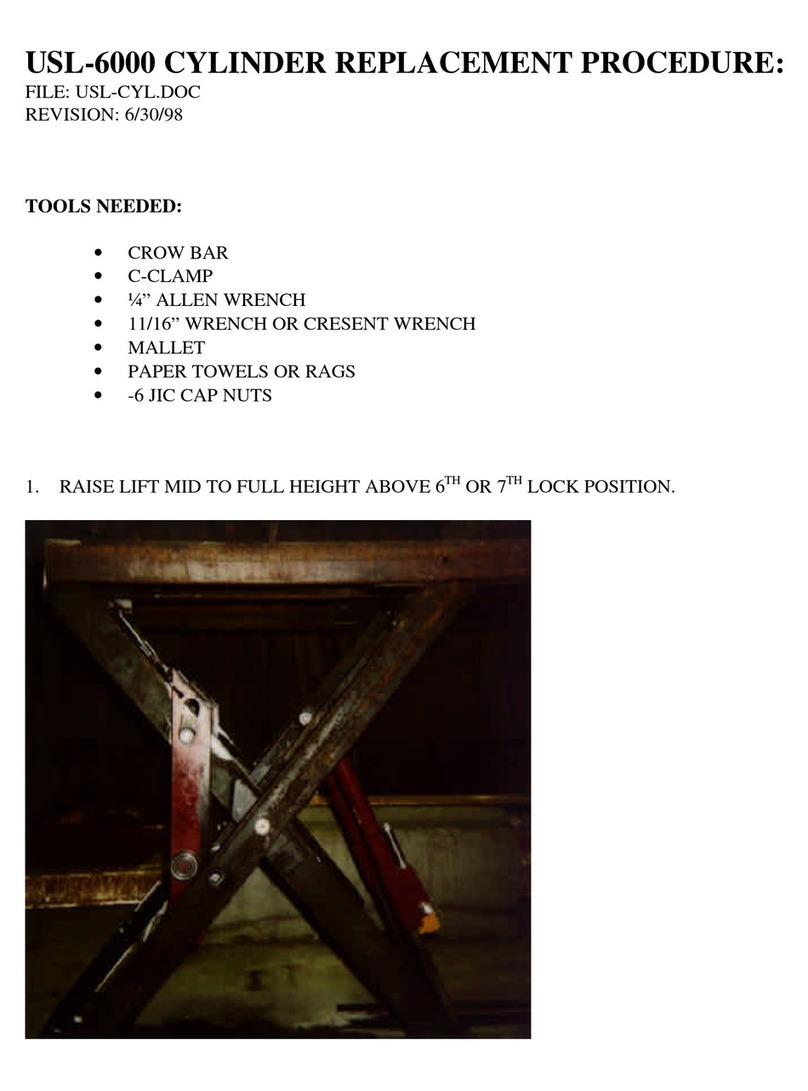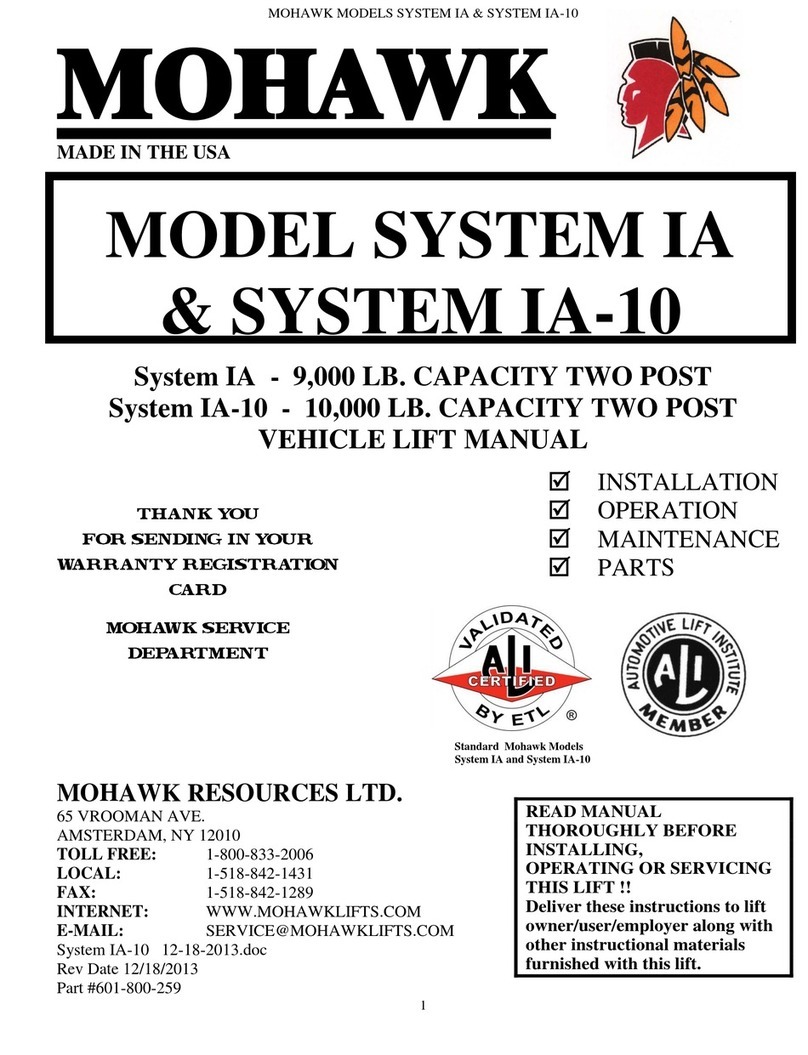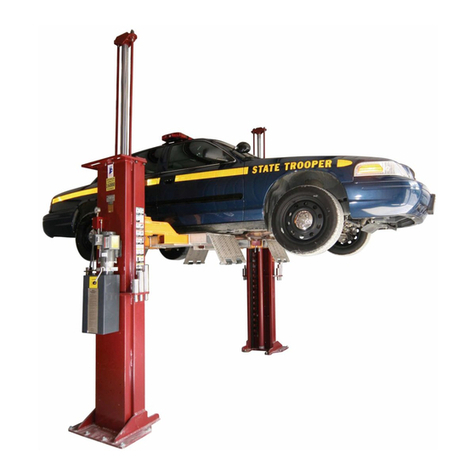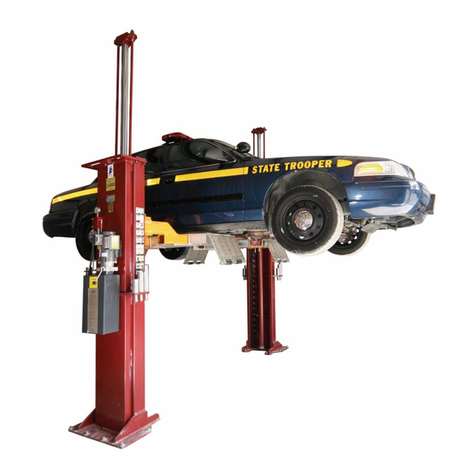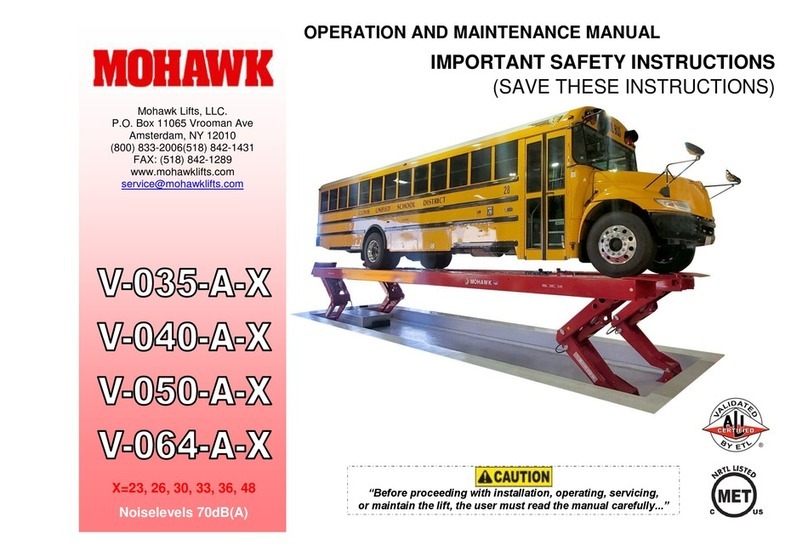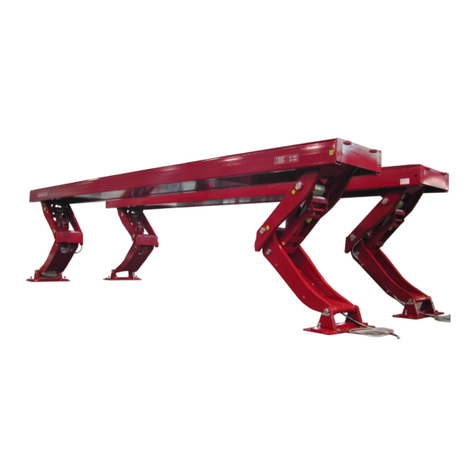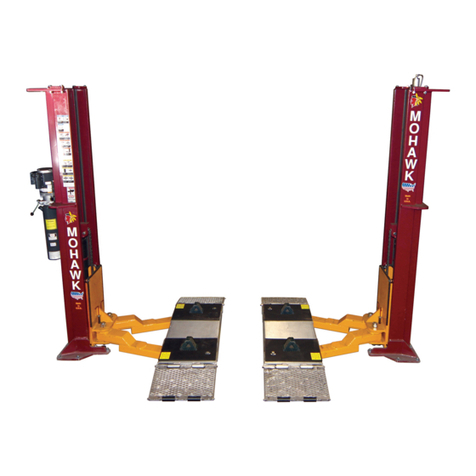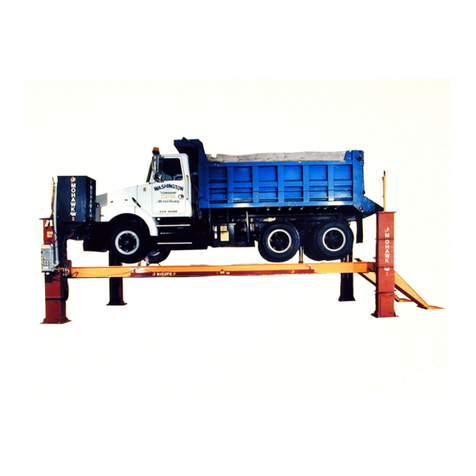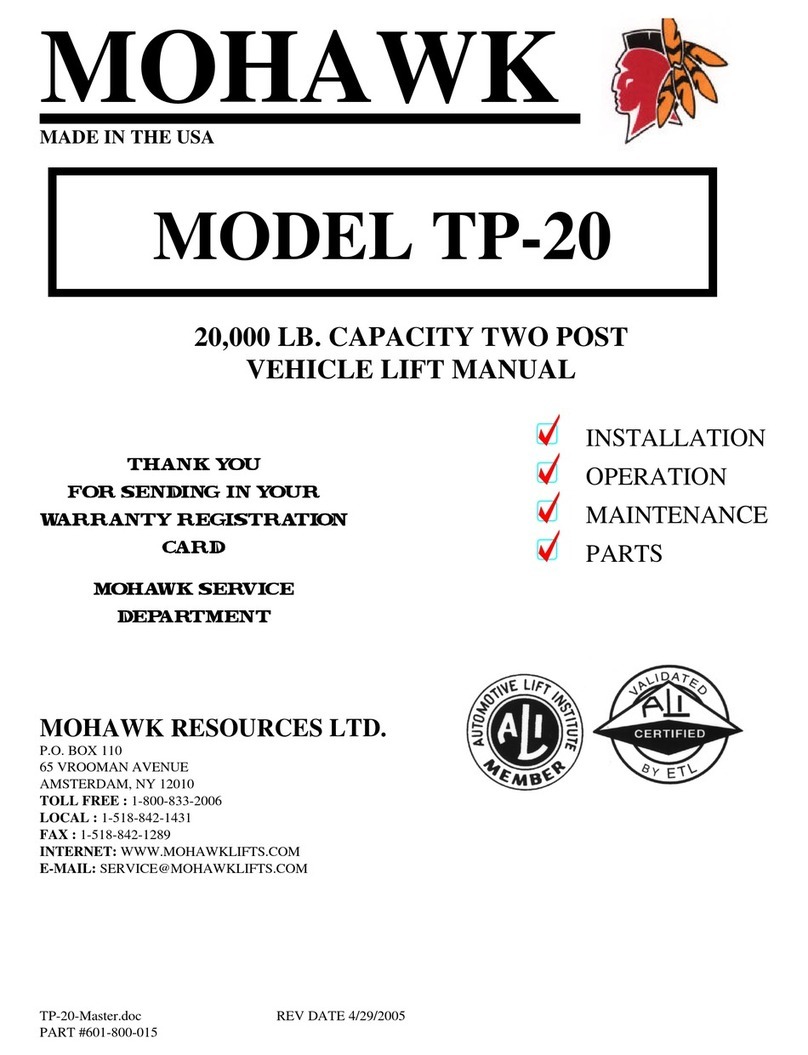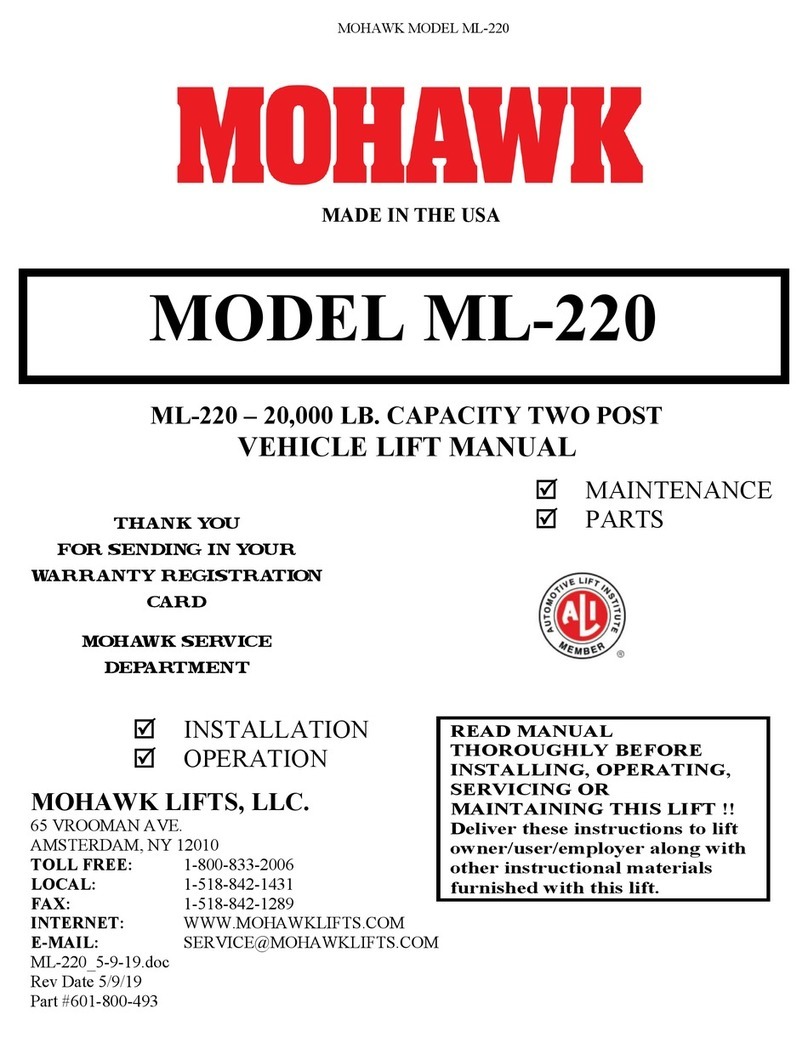
vi
MOHAWK WARRANTIES
EFFECTIVE DATE: 12/1/2015*
READ THIS WARRANTY IN ITS ENTIRETY
GENERAL WARRANTY INFORMATION:
MOHAWK’S OBLIGATION UNDER THIS WARRANTY IS LIMITED TO REPAIRING OR REPLACING ANY PART OR PARTS
RETURNED TO THIS FACTORY, TRANSPORTATION CHARGES PREPAID BY CUSTOMER WITH AUTHORIZED RETURN (RGA),
WHICH PROVE UPON INSPECTION TO BE DEFECTIVE AND WHICH HAVE NOT BEEN MISUSED. DAMAGE OR FAILURE TO ANY
PART DUE TO FREIGHT DAMAGE OR LACK OF REQUIRED REGULAR DOCUMENTED MAINTENANCE IS NOT COVERED UNDER
THIS WARRANTY. ALL WARRANTY CLAIMS MUST BE PERFORMED IN ACCORDANCE TO MOHAWK’S WARRANTY PARTS
RETURN POLICY (CONTACT MOHAWK’S SERVICE DEPARTMENT FOR MORE INFORMATION).
THIS WARRANTY DOES NOT COVER MIS-DIAGNOSING OF UNIT OR PARTS RETURNED THAT ARE NON-DEFECTIVE. THIS
WARRANTY DOES NOT COVER ANY CONSEQUENTIAL OR INCIDENTAL DAMAGES INCLUDING, BUT NOT LIMITED TO, LOST
REVENUES OR BUSINESS HARM. THIS EQUIPMENT HAS BEEN DESIGNED FOR USE IN NORMAL VEHICLE MAINTENANCE
APPLICATIONS. A SPECIFIC INDIVIDUAL WARRANTY MUST BE ISSUED FOR UNITS THAT DEVIATE FROM INTENDED USAGE,
SUCH AS HIGH CYCLE USAGE IN INDUSTRIAL APPLICATIONS, OR USAGE IN EXTREMELY ABUSIVE ENVIRONMENTS.
MOHAWK RESERVES THE RIGHT TO DECLINE RESPONSIBILITY WHEN REPAIRS OR MODIFICATIONS HAVE BEEN MADE OR
ATTEMPTED BY OTHERS WITHOUT WRITTEN AUTHORIZATION FROM MOHAWK RESOURCES LTD.. THIS WARRANTY DOES
NOT COVER LABOR OR TRANSPORTATION. THIS WARRANTY DOES NOT COVER DOWNTIME EXPENSES INCURRED WHEN
UNIT IS IN REPAIR. THE LIFT MUST BE REGISTERED WITHIN 30 DAYS OF INSTALLATION BY MAILING SUPPLIED
WARRANTY REGISTRATION CARD TO MOHAWK AND MUST BE SIGNED BY A LICENSED ELECTRICIAN. THE MODEL
NUMBER AND SERIAL NUMBER OF THE EQUIPMENT MUST BE FURNISHED WITH ALL WARRANTY CLAIMS. THIS WARRANTY
STATEMENT CONTAINS THE ENTIRE AGREEMENT BETWEEN MOHAWK RESOURCES LTD. AND THE PURCHASER UNLESS
OTHERWISE SPECIFICALLY EXPRESSED IN WRITING. THIS NON-TRANSFERABLE WARRANTY APPLIES TO THE ORIGINAL
PURCHASER ONLY.
THIS WARRANTY DOES NOT COVER NORMAL SURFACE WEAR ITEMS, ITEMS SUBJECT TO ABRASION, OR ITEMS USED IN A
CORROSIVE ENVIRONMENT. SOME ITEMS ON LIFT ARE SUBJECT TO NORMAL “WEAR AND TEAR” AND ARE NOT COVERED
UNDER THIS WARRANTY.
STRUCTURAL AND MECHANICAL COMPONENTS (ALL LIFTS):
STRUCTURAL AND MECHANICAL COMPONENTS OF THIS UNIT ARE GUARANTEED FOR THE BELOW STATED TIME FRAME,
SPECIFIC TO MODEL LISTED, FROM THE DATE OF SHIPMENT FROM FACTORY, AGAINST DEFECTS IN WORKMANSHIP
AND/OR MATERIALS WHEN LIFT IS INSTALLED AND USED ACCORDING TO SPECIFICATIONS.
25-YEARS STRUCTURAL / 10 YEARS MECHANICAL: TWO-POST MODELS A-7, SYSTEM IA-10, LC-12, LMF-12, TP-
16, TP-18, TP-20, TP-26, TP-30. STRUCTURAL ITEMS COVERED INCLUDE LEG, CARRIAGE, SWING ARM AND
SLIDER WELDMENTS (EXCLUDING NORMAL WEAR AREAS AS STATED ABOVE). MECHANICAL ITEMS COVERED
INCLUDE ROLLER BEARINGS AND LIFTING CHAIN.
5-YEAR: MODELS TL-7.
3-YEAR: MODELS TR-19, TR-25, FL-25, TR-30, TR-33, TR-35, TR-50, TR-75, TR-110, TR-120, MP-SERIES LIFTS.
2-YEAR: MODELS PARALLELOGRAM SERIES LIFTS.
1-YEAR: MODELS TD-1000, TD-2000, CT-1000, USL-6000.
POWER UNIT (ALL LIFTS):
ALL POWER UNIT COMPONENTS (MOTOR, PUMP AND RESERVOIR) ARE GUARANTEED FOR TWO YEARS FOR PARTS,
FROM THE DATE OF SHIPMENT FROM FACTORY, AGAINST DEFECTS IN WORKMANSHIP AND/OR MATERIALS WHEN THE
LIFT IS INSTALLED, WIRED BY A LICENSED ELECTRICIAN AND USED ACCORDING TO SPECIFICATIONS.
ELECTRICAL COMPONENTS (ALL LIFTS):
ALL ELECTRICAL COMPONENTS (EXCLUDING MOTOR) ARE GUARANTEED FOR ONE YEAR FOR PARTS, FROM THE DATE
OF SHIPMENT FROM FACTORY, AGAINST DEFECTS IN WORKMANSHIP AND/OR MATERIALS WHEN THE LIFT IS
INSTALLED AND USED ACCORDING TO SPECIFICATIONS. SEE WARRANTY EXCEPTIONS SECTION FOR BATTERIES.
PNEUMATIC-AIR COMPONENTS (ALL LIFTS):
ALL PNEUMATIC (AIR) COMPONENTS (I.E. AIR CYLINDERS AND POPPET AIR VALVES) ARE GUARANTEED FOR ONE YEAR
FOR PARTS, FROM THE DATE OF SHIPMENT FROM FACTORY, AGAINST DEFECTS IN WORKMANSHIP AND/OR
MATERIALS WHEN THE LIFT IS INSTALLED AND USED ACCORDING TO SPECIFICATIONS. COMPONENTS IN A PNEUMATIC
SYSTEM THAT ARE NOT PROPERLY REGULATED, LUBRICATED AND CONDITIONED WITH AN AIR DRYING SYSTEM ARE
NOT COVERED UNDER WARRANTY.
HYDRAULIC COMPONENTS (ALL LIFTS):
EXCLUDING CYLINDERS AND PUMPS (COVERED IN OTHER SECTIONS), ALL HYDRAULIC COMPONENTS (I.E. VALVES AND
FITTINGS) ARE GUARANTEED FOR ONE YEAR FOR PARTS, FROM THE DATE OF SHIPMENT FROM FACTORY, AGAINST
DEFECTS IN WORKMANSHIP AND/OR MATERIALS WHEN THE LIFT IS INSTALLED AND USED ACCORDING TO
SPECIFICATIONS.
Property of American Airlines
